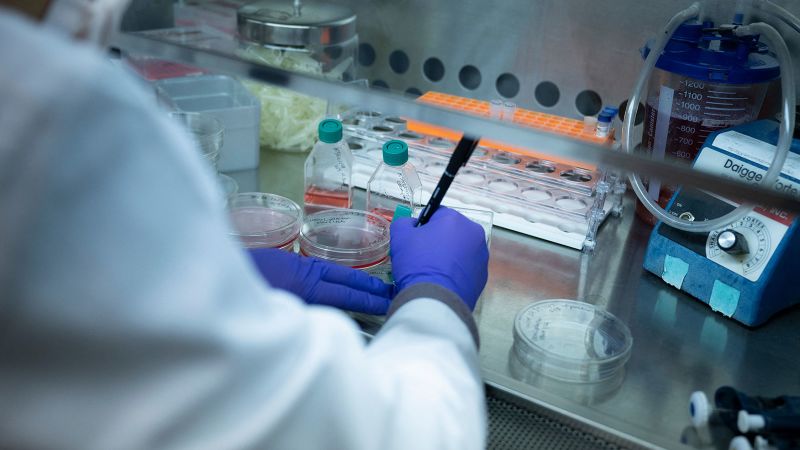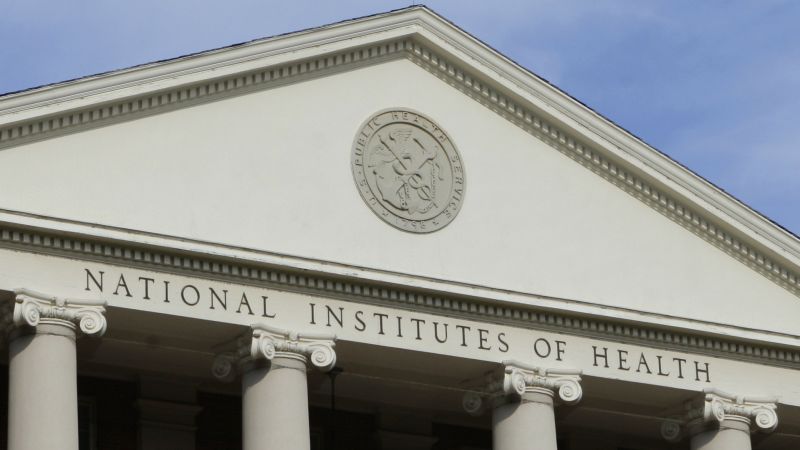—
Scientists, faculty and staff at Emory University received an alarming email Saturday: An announcement of funding caps from the National Institutes of Health meant scientists and their labs at research institutions across the US would need to tighten their belts.
For the Atlanta-based school, a preeminent research university that specializes in health and medicine — including cancer, vaccines and drugs to prevent and treat HIV — the new federal cap will decrease funding by $140 million a year.
“To put it simply, this development could affect nearly every academic unit at Emory, with both immediate and long-term consequences for our scientific research, clinical trials, patient care, and other academic pursuits,” the memo said.
It’s just one of the far-reaching, trickle-down effects of President Donald Trump’s sweeping executive actions that threaten to slow or halt health and science research in the United States, risking Americans’ well-being and putting the country at risk of falling behind on critical advances.
Across the many federal agencies that fund or conduct scientific research — or use science to make rules affecting human health, the environment and public safety — multiple scientists describe to and on social media a fear of staff getting laid off or losing funding.
Universities that do breakthrough-level studies are scrambling to understand the effects as their funding agencies slash their budgets.
In its latest blow — and what prompted the email to Emory staff and researchers — the Trump administration delivered a broadside Friday night, capping the costs that research institutions can charge the government to maintain the labs, equipment, administrators and review boards they need to conduct the country’s cutting-edge studies.
Twenty-two states announced Monday that they are suing the Trump administration for “attempting to illegally slash grant funding” at research institutions.
The Department of Health and Human Services, has the authority to make these changes, its director of communications, Andrew Nixon, told via email — and believes it could even require institutions to return funds they have already received, though it hasn’t yet gone that far.
“Our Administration wants to help America have the best research in the world, and we believe that by ensuring that more cents on every dollar go directly to science and not to administrative overheard, we can take another step in that direction,” Nixon said.
“These are funds that are used to keep, I mean literally, to help keep the lights on at the university,” said Katie Edwards, who directs the Interpersonal Violence Research Laboratory at the University of Michigan. “Without having sufficient funding, I don’t know how many universities are going to be able to continue to be leading research institutions in the world, quite frankly.”
A White House official defended the administration’s actions, adding that it is doing an “audit” of what federal funding is going out the door.
“Assuming this work is not grift … or there’s nothing malicious going on, we’re doing an audit process,” the official said. “I understand there’s a sense of concern here, but this isn’t an anti-science administration.”
The federal government funds about 40% of the basic research conducted in the United States, according to the National Science Foundation; pulling that funding pipeline would deliver a crippling blow not just to America’s universities but to progress in cancer research, climate science and more.
Beyond universities, the federal government itself funds and supports cutting-edge science at NIH. Researchers there have been told they can’t hire new trainees to help run their studies, can’t review scientific papers or write commentaries in medical journals and can’t advertise to recruit participants for their clinical trials, according to details from internal communications viewed by .
Edwards, at the University of Michigan, employs about 50 research assistants. Her work focuses on preventing sexual violence in disadvantaged youth, including LGBTQ and transgender kids. Over the past two weeks, she’s had one grant proposal pulled out of review at the NIH, with no guidance about its fate. She was told to stop work on another study, though that order was ultimately reversed by court injunction.
She says the confusion and uncertainty have been devastating.
“We have an intervention study that’s intended to prevent depression and suicide and other negative outcomes among trans youth, and it would be extremely dangerous for us to just stop in the middle of a clinical trial. I mean, literally, it could cost lives,” she added.
Alongside funding cuts, staff at federal agencies — including scientists — are receiving mass emails inviting them to quit their jobs for so-called buyouts. In response to a question about whether they could get another job and still be paid severance, the email encouraged it: “The way to greater American prosperity is encouraging people to move from lower productivity jobs in the public sector to higher productivity jobs in the private sector.”
“So I’ll just be doing my low-productivity NIH job, inhibiting American prosperity,” one health researcher told .
A survey created by public health researchers to document the repercussions of Trump’s executive actions has generated more than 3,000 responses. About 80% of those who answered the survey said they receive direct federal funding.
Another alarming effect of the actions: Some overseas health research labs could be shuttered — labs that monitor harmful infections that could evolve into the next global pandemic.
Another early-stage safety study, which was testing vaginal rings to prevent HIV and pregnancy in women in South Africa, was terminated abruptly, forcing researchers to scramble to contact 17 study participants.
“We had to make phone calls to those participants pretty much immediately and tell them to come into the clinic,” said Leila Mansoor, a senior scientist with the Centre for AIDS Programme of Research in South Africa.
“We had to remove those rings, even though they were only in the trial for, say, a few weeks, when they actually signed up to be in the trial and use one ring for one month,” Mansoor said.
The emergency withdrawal violated the trust of the study participants, she says, and set back years of work to get to that point in the trial. Mansoor said they’re searching for alternative sources of funding but don’t know whether they’ll be able to keep their doors open.
“The political agenda is resulting in researchers and science, really, just being collateral damage,” she said.
One of the fears spreading through the science community is that impartial scientific work will be infused with politics – to the point that projects could be chosen for funding based on whether researchers support Trump.
“We want to be able to continue this nonpartisan work,” one coastal researcher who works with NOAA told . “People are worried that you’ve got to be viewed as not just sympathetic but a (Trump administration) supporter if you want to get funded.”
Independent scientific boards that advise federal agencies on the regulations they craft have also been affected.
Last week, all members of the Scientific Advisory Board and the Clean Air Scientific Advisory Committee, two independent panels that advise the Environmental Protection Agency, were dismissed – something that happened during Trump’s first term, as well.
The decision to “reset” the membership of the two committees “seeks to reverse the politicization of SAB and CASAC made by the previous administration,” EPA spokeswoman Molly Vaseliou said in a statement.
Jeremy Sarnat, an environmental health professor and the most recent chair of the Clean Air Scientific Advisory Committee, pushed back on that notion, saying he has never seen politicization inside the committees.
“I’m not a politician; I’m just an air pollution scientist,” he told . “I’m not interested in the politics of this.”
The dismissal of the board throws its work on lead and nitrogen oxides into limbo, as well as its upcoming work on ozone.
“The work on each of these pollutants will be delayed while the administration finds new members for these committees,” Sarnat said.
The membership of these independent advisory groups has fluctuated from administration to administration. Biden EPA Administrator Michael Regan added and replaced members of both committees after Biden took office in 2021.
The independent committees are important because the laws governing the EPA’s work require it to use “the best available science,” said Chris Frey, a scientist who served in the Biden EPA and sat on both boards during previous administrations. That science goes into developing regulations on multiple chemicals, pollutants and planet-warming emissions.
“They’re there as part of good government and good scientific practice,” he said. “This is really about integrity and protecting the public.”
Frey said he was concerned by what has happened in the first weeks of the Trump administration and suggested that, unlike previous Republican or Democrat presidents, it was “looking outside of the law.”
“They’re much more aggressive now. They’re either trying to sideline science or censor it,” Frey said.
’s Neha Mukherjee contributed to this report.










